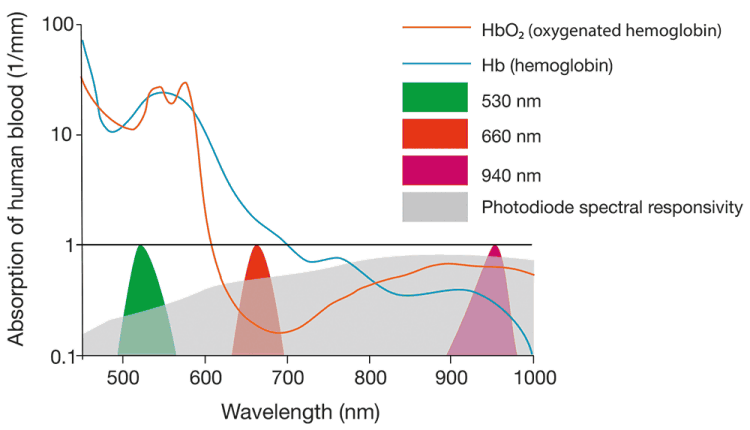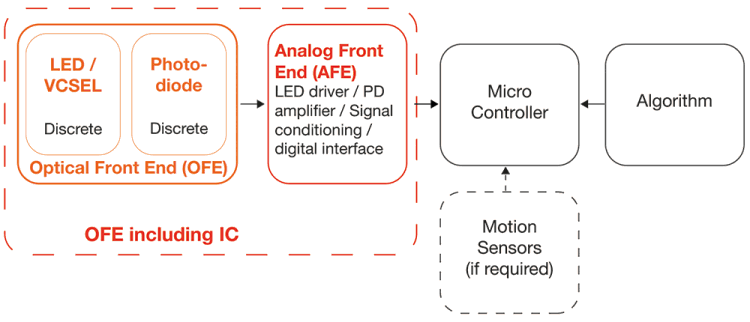
The increasing demand for biosensors is a direct response to the growth of the healthcare market, technological innovation, an aging population, and the increased existence of serious diseases. Biosensors are effective at detecting biological materials, such as enzymes, whole cells, and tissues.
Because of this, wearable biosensors are being adopted rapidly within the healthcare industry. Wearable biosensors are devices that are designed to report physiological data in real time, using biochemical markers for measurements.

Optical sensors from ams OSRAM
The SFH series sensors from ams OSRAM are compact opto-electronic devices that use LEDs and photodiodes to monitor heart rate and oxygen saturation. The LED transmits light through the epidermis into the dermis layer which contains veins and arteries amongst other extracellular components. When the body’s heart beats, blood is pumped through the arteries and veins which creates pressure that causes a change in volume, changing the way the veins and arteries reflect this incoming light. The photodiode measures the transmitted and reflected light, providing information about the heartrate.

Oxygen saturation is determined by measuring the haemoglobin absorption in the blood. Oxygenated haemoglobin (HbO2) absorbs light differently than non-oxygenated haemoglobin (Hb). Non-oxygenated haemoglobin absorbs greater amounts of red light, with wavelengths around 660 nm. Oxygenated haemoglobin absorbs larger quantities of infrared light, having wavelengths around 960 nm. To measure oxygen saturation, red and infrared LEDs illuminate the skin, and a photodetector measures the difference in absorption.
The oxygen saturation (SpO2) can then be calculated through the use of different absorption levels (Hb vs. HbO2) using the following formula:
The absorption of light in human blood is primarily dependant on the oxygen content of the haemoglobin. There is more absorption occurring at shorter wavelengths (from blue to yellow), which indicates that green light works the best for heart measurement applications. Red and infrared light can be used for areas that have a higher arterial blood concentration, such as the fingertips, ears, and forehead.

The entire health monitoring system consists of various functional building blocks. The optical front end (OFE) can be realised through discrete components (LEDs and photodiodes) or with an integrated module. The analog front end (AFE) provides the analog signal processing and programmable LED driving.
Any health monitoring system also requires a suitable microcontroller and a heart rate and motion compensation algorithm. In dynamic situations, motion sensors measure artefacts that arise from the user motion. For increased accuracy, a motion compensation feature is therefore necessary and requires the addition of a suitable motion sensor.
| Tel: | +27 11 608 0144 |
| Email: | sales@nuvisionelec.co.za |
| www: | www.nuvisionelec.com |
| Articles: | More information and articles about NuVision Electronics |

© Technews Publishing (Pty) Ltd | All Rights Reserved